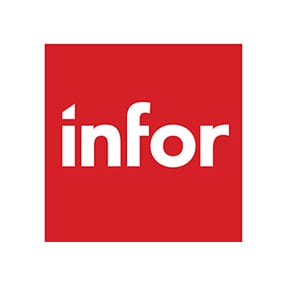
Over the past two decades, supply chains have become more international, sophisticated – and complex. Yet effective supply chain collaboration, never mind its coherent management, was hamstrung by those traditional internal siloes. It was further compounded by the lack of an all-embracing view (what some refer to as a network).
Multiple elements make up supply chains, running from each original order through to final delivery, payment and completion. One example: it is believed that 80% of the data about a supply chain is held outside most enterprises. It is, in effect, locked up in supply chain partners’ systems. The consequence is that many enterprises are working blindly.
An organisation with such supply chains needs to understand what happens beyond itself. This underpins why supply chains and cloud computing are a natural fit. The issue is what to do.
First: see the big picture
Cloud computing enables the visibility and use of information across the whole supply chain. Leveraged correctly, it becomes a shared utility that is both globally available and scalable. Solutions built with a cloud approach enable network effects – where all those authorised can participate in parallel.
This supply chain context opens up opportunities for everyone. From the original buyer and supplier to all relevant intermediate participants (shippers, agents, customs, tax authorities, etc.) They can see what is happening, when and where.
In turn, this emphasises two primary aspects of the big picture: visibility and planning:
- Visibility means real-time actions become possible; when supply chains become interactive, they introduce greater dynamism as well as improve and secure the trading environment.
- Planning enables data analysis which delivers informed decision taking, speeds improvements as well as expanding opportunities for streamlining existing processes, and innovating for the future.
That said, there is one important point to emphasise upfront. Not everything in a supply chain will benefit from the introduction of cloud-based supply chain management immediately. An instance: complex or unique processes which demand highly specific activities are unlikely to be good initial candidates. Instead, each enterprise should choose where the bigger positive effects will occur, which may not necessarily lie within itself: sometimes the greater impact may come from an action which a participating partner takes. Understanding the big picture should make this clearer.
Second: decide where the most immediate positive impacts can occur
In most enterprises, a relatively narrow set of initial activities should draw the most attention. These likely include:
- supply chain planning
- sourcing/procurement
- logistics
- payment processing (including trade financing).
By enabling a network effect via a cloud, through the sharing of information with all participants in each specific supply chain, enterprises will identify optimisations ‘over’ (or beyond) individual functions or silos. Instead of being constrained by these functions/silos, visibility and planning open up avenues for collaboration and innovation. From these, it becomes possible to identify mutual efficiencies and benefits – whether measured in time or cost reductions.
One way to think about this is to consider a supply chain in the cloud from four angles:
- the individual transaction
- the analytics derived from the aggregation of those transactions
- the insights, and management awareness, produced by the analytics
- evidence of regulatory and other compliance.
The individual transaction is where most supply chain specialists focus. Transactions are, after all, the lifeblood of a supply chain. Dashboards, alerts and visibility all improve execution. Yet the analytics dimensions are where deeper understanding occurs of the broader business environment within which each transaction exists.
If enterprises can grasp the interconnections (across silos internally as well as across the whole supply chain network enabled by a cloud approach), then improvements become possible: The whole (not the silo-specific) supply chain network becomes available for pro-active management. It can be as simple as approving supplier participants (to avoid fraud and/or reputational risk) through to purchasing optimisation. However, it is measured – in efficiency or cost reduction or improved partner cooperation – cloud-enabled results flow through.
Third: focus on the cloud mechanisms which open up Supply Chain Management
Finally, having assessed where the most immediate positive impacts are available, it becomes time to introduce an enterprise’s supply chain participants to the cloud benefits, starting with individual transactions. However, despite the conceptual simplicity inherent in a cloud being a supply chain utility, there exist a complex set of interactions between the many participants (in a supply chain). These need addressing, for they may cross jurisdictions and accepted practices, to obtain mutual:
- clarity around the definition and attribution of responsibilities and liabilities
- agreed accountability in national, regional or global circumstances (legal frameworks and compliance regimes not excepted)
- adoption of a form of transparency covering due diligence, security and risk management
- Service Level Agreement to underpin trust between participants
- establishment of interoperability practices
- addressing of training and lack of awareness.
A key underlying theme of all these is the need for constant assurance. While initially, such assurance may act to preserve existing processes, the understanding of the latter should subsequently be exploited to create a framework where a ‘supply-chain-in-the-cloud’ opens up new ways for participants to work together.
Management conclusion
For many, cloud computing is for internal systems only. For modern supply chain management, this should not be so. An enlightened approach, instead, sees cloud as enabling supply chains to obtain visibility, making changes happen quickly and delivering benefits for all – from locating shipments to improving inventory control to enabling collaboration and facilitating an ever-increasing cycle of improvement.
When supply chain information is in a cloud, enterprises possess information:
- not only for all the parties involved (from customer to supplier and the intermediaries in-between)
- but also for management.
Supply chain in a cloud should be just as much about transparency sourcing as about every customer’s experience. Customers expect to understand how, when and where their goods will be delivered. Suppliers want the same, from transaction origination through manufacturing to delivery and completion payment.
If the supply chain is about the complex interaction of orders, logistics, financing and more, the cloud provides the network and information. As such, supply chains and cloud are a natural fit. There are, therefore, few justifications not to adopt a cloud approach into a supply chain.
Enterprise Times has created a survey executed by SG Analytics which ask a series of questions that looks at how Manufacturers are looking to transition to cloud technology. The survey is open to European respondents in managerial 
This Blog was commissioned by Infor
Infor is a global leader in business cloud software specialized by industry. With 17,300 employees and over 68,000 customers in more than 170 countries, Infor software is designed for progress. To learn more, please visit https://www.infor.com/en-gb
Infor customers include:
- The top 20 aerospace companies
- 9 of the top 10 high tech companies
- 14 of the 25 largest U.S. healthcare delivery networks
- 19 of the 20 largest U.S. cities
- 18 of the top 20 automotive suppliers
- 14 of the top 20 industrial distributors
- 13 of the top 20 global retailers
- 4 of the 5 top brewers
- 17 of the top 20 global banks
- 9 of the 10 largest global hotel brands
- 7 of the top 10 global luxury brands


























